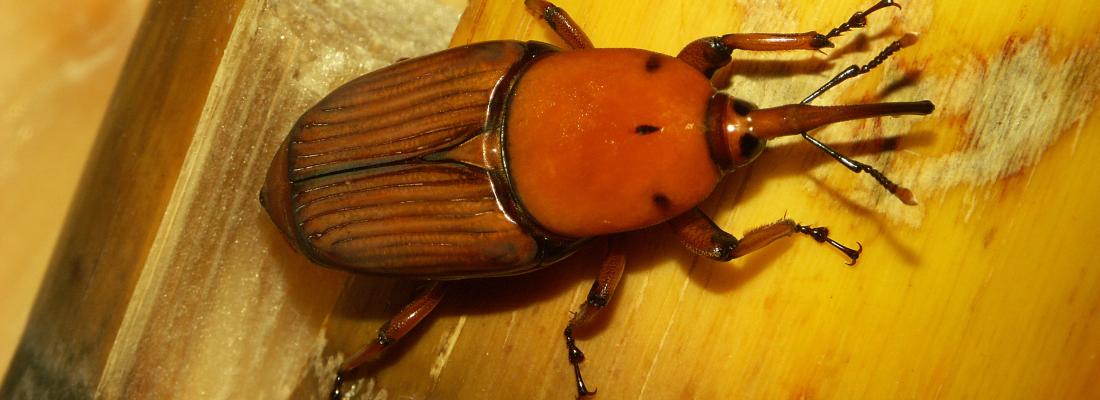Agroecology 2 min
Biocontrol target for the red palm weevil revealed
Throughout the world, palm trees are of tremendous importance economically and socio-culturally as well as in terms of tourism and heritage. Of all the pests that infect them, the red palm weevil, Rhynchophorus ferrugineus, remains their main enemy. A quarantine pest, it causes enormous economic losses in palm tree crops. Researchers from INRAE and Sorbonne University, in collaboration with research teams in Saudi Arabia and the United Kingdom, have identified the first pheromone receptor for the red palm weevil, thereby opening the way to new methods for disrupting aggregation and reproduction and for devising early detection methods by developing biosensors based on that receptor. This research work was published in the 9 March 2021 issue of Molecular Ecology.
Published on 08 April 2021

The red palm weevil, Rhynchophorus ferrugineus, is the number one enemy of palm trees around the world, causing millions of euros in losses each year. Over the past two decades, this insect has devastated the date palm in Saudi Arabia, where the pest currently threatens an estimated six million palm trees. It can be found in all the countries of Asia, southern Europe and North Africa, as well as in Australia. This insect evolves through several stages in its microhabitat, i.e. the stipe of a palm tree, and colonises palm tree groves using a sophisticated type of chemical communication that includes an odorant compound, i.e. the aggregation pheromone. This signal attracts weevils and helps orient them towards palm trees for colonisation and mating. Uncovering mechanisms to detect this pheromone may provide a solution for controlling the red palm weevil.
Researchers from INRAE and Sorbonne University, in collaboration with research teams in Saudi Arabia and the United Kingdom, have identified the very first red palm weevil olfactory receptor involved in detecting and recognising the aggregation pheromone. This receptor, which is one of the 71 olfactory receptors on a weevil's antennae, is a prime target for designing olfactory agonists, antagonists or blockers, which would allow biocontrol of this worldwide pest by disrupting aggregation and mating. The receptor, which is both very sensitive and specific, could also be used as a biosensor for developing a new generation of electronic noses capable of very early detection of the pest's emergence, in that way anticipating deployment of control methods.
| Reference: Antony, B., Johny, J., Montagné, N., Jacquin‐Joly, E., Capoduro, R., Cali, K., Persaud, K., Al‐Saleh, M.A. and Pain, A. (2021), Pheromone receptor of the globally invasive quarantine pest of the palm tree, the red palm weevil (Rhynchophorus ferrugineus). Mol Ecol. https://doi.org/10.1111/mec.15874 |
